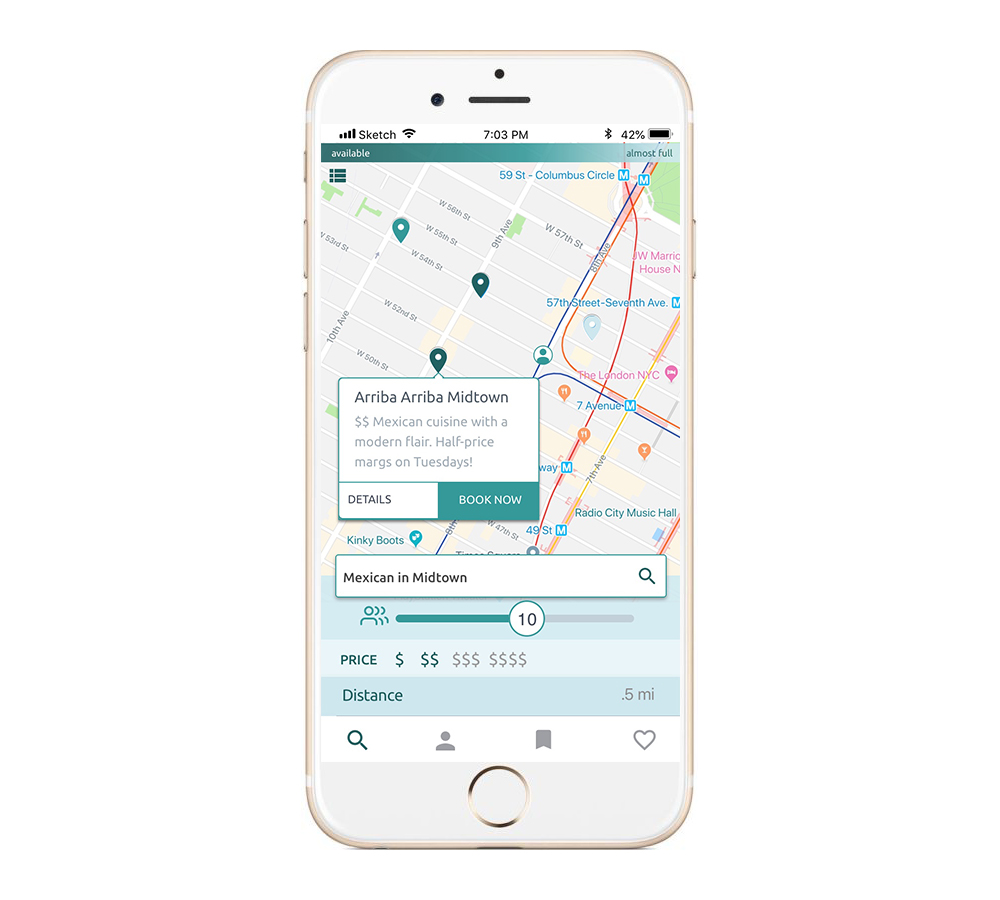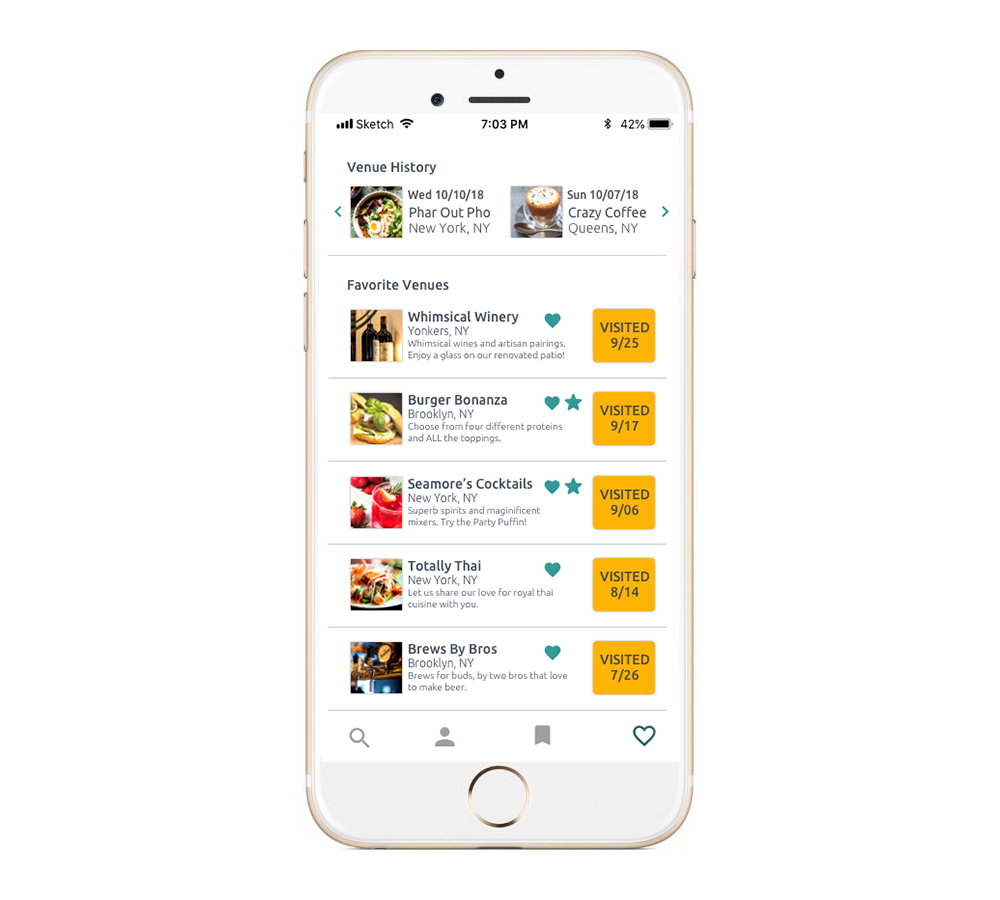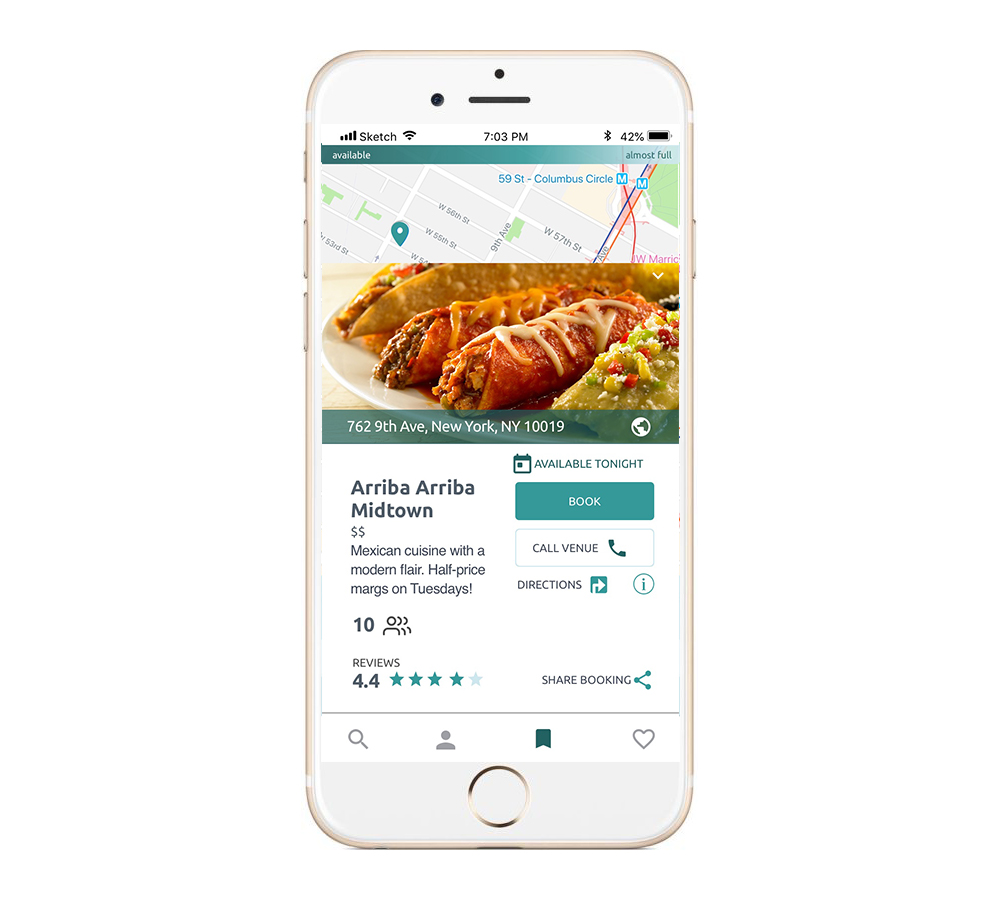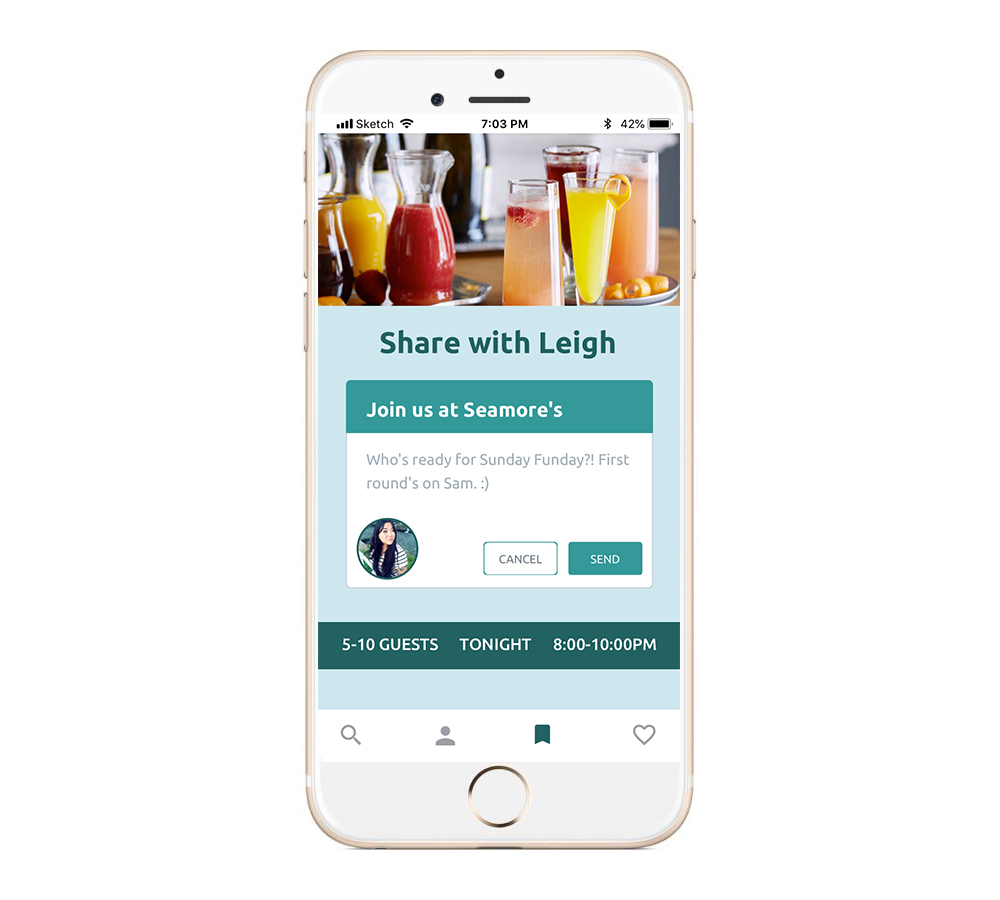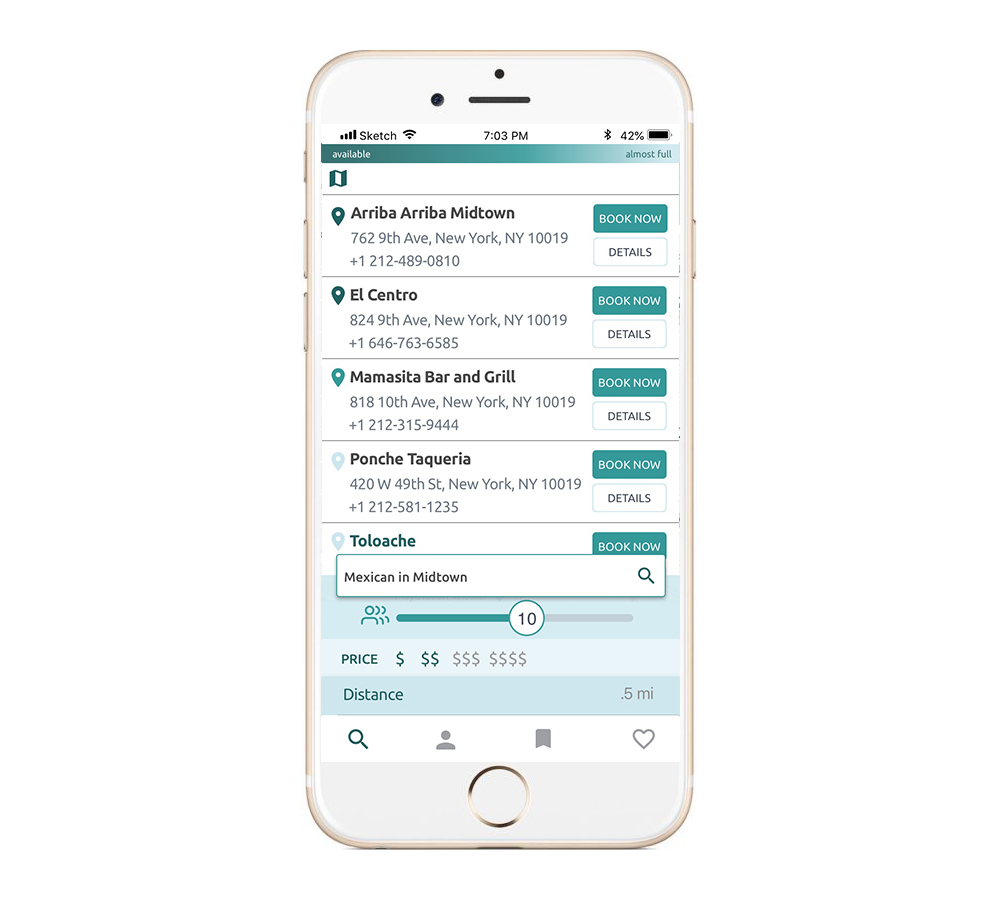WHERE TO
the app for making the party happen/spontaneous group gatherings
For this project, my partner and I were tasked with developing a native app or website that addressed a current market need. It was total free reign, the opportunities and obstacles seemed endless. The only parameter was we had to select a potential corporate partner and defend their viability. We started off coming to the table with 3-5 ideas and then started a brainstorming session, we had to submit a proposal with 3 core ideas, a problem statement, and a potential brand partner. While the brainstorm took us in many different directions we eventually focused in on the restaurant industry, specific to urban areas.
HYPOTHESIS:
How can we connect potential guests, in real-time,
with the restaurants that have unused space?
OVERVIEW:
Deliverables:
InVision Prototype
Spec Document
(Annotations, Styleguide, Sitemap)
Team:
Cora Books - SCRUM, Persona, Copywriting, Wireframing, Usability Testing
Faith McCormick - Competitive Research, Usability Guide and Report, Persona, Wireframing, Usability Testing
Timeline:
2 weeks
My Role:
UX Researcher
UX Designer
RESEARCH
Talking to both users and venue managers would be key for developing features and functionality. We started by sending out screener surveys to find qualified user interviews which we scheduled over the course of two days. We spoke to 4 managers and 3 users who frequently go out in groups of six or more. We used snowball recruiting and social networking to recruit potential interviewees, specifically seeking out individuals in NYC or an equivalent city who either frequently arrange large group outings or have significant experience in the restaurant/bar industry.Once our interviews were completed we began affinity mapping to determine trends and insights from each user type.
INTERVIEW STRUCTURE
1 interviewee
1 interviewer
1 note take
User Interviews
Data was captured via manual notes, as well as audio recordings which were later transcribed. Interviews lasted 30-40 minutes per session, and were conducted primarily over the phone.
Problems facing guests
““I call it ‘Netflix syndrome’ - when choosing a restaurant, people are so overwhelmed with information that it becomes increasingly difficult to make a decision.”
— Philip, NYC resident and frequent restaurant guest”
““Organizing groups can be stressful, but it’s really fun and rewarding to get everyone together. It’s nice to have a staff that is excited to have us.””
Problems facing Restaurants
““[As a manager] booking a last-minute group, just knowing the number of people, time, and why would always be really helpful. People expect the server to be knowledgeable and personable, and to be able to deliver a fun and informed experience.””
““The event space in the restaurant I worked at wasn’t as well known as it could be. But when people found out about it, they would come back with big groups.””
Affinity Mapping
Data Synthesis
Affinity Mapping resulted in a number of insights that were used as the foundation of building out the features for the app.
Guest “I Statements”:
“I love discovering new places in the city.”
“I enjoy the social aspect of going out to eat/drink.”
“I tend to have specific criteria in mind when selecting a venue.”
“I communicate with my group and the venue to ensure proper bill payment.”
“I take on a leadership role in my group, communicating key logistics to relevant parties.”
“I consider location as a primary factor when selecting a venue.”
”I prefer to go to restaurants that treat me like family.”
“I want to minimize logistical surprises when I go out to eat/drink.”
“I appreciate the convenience of automated reservation systems, but am frustrated by their limitations.”
Manager “I statements”:
“I can provide the best experience for my customers when I know personal details about them.”
“I would like to fill unused space in my venue.”
“I can provide the best customer experience when I know what to expect for the night.”
“I can provide the best customer experience when a clear system is in place.”
I have specific requirements for accepting bookings at my venue.”
“I try to accommodate unexpected groups whenever possible, but certain criteria has to be met.”
INSIGHTS
Location is the most important factor in selecting a venue.
Other factors included: menu, seating variety, ambiance, service
Most Restaurants consistently have unused space , but lack the tools and time to market them to the public.
Potential guests want the tools to make informed decisions but are easily overwhelmed.
Customers greatly value personalized service from hosts.
Hosts would like to have more information about their customers to be able to provide more personalized service.
a. A communicative group leader is valued by both host and guests, and helps facilitate a positive experience.
b. The role of group leader often rotates due to the added responsibility and stress of the role.
Guests planning ahead value control and typically call to reserve, while guests at the last minute prioritize convenience and book online.
PERSONAS
COMPETITIVE ANALYSIS AND FEATURE PRIORITIZATION
Once the synthesis portion was complete it was time to start the feature prioritization process and scoping design studios. I developed a competitive analysis and then moved to creating a MoSCoW chart.
Current Platforms
COMPETITIVE MATRIX
PIN UP AND DESIGN STUDIO
The feature prioritization and design studio section were efficient and productive because all the features were based on user interviews and insights. We knew we wanted to create an app the addressed the main user goal of quickly finding a venue that could host the necessary group size in real time. We had to prioritize the features for users and let the other functions potentially be incorporated in later iterations. So much of creating a successful MVP is accurately defining user goals and the main purpose or need the app is addressing.
We also did a Pin-up review that included our insights from user interviews, personas, and competitive matrix. We got feedback and questions from colleagues on areas of improvement.
MOSCOW CHART
WIREFRAMING + USABILITY TESTING
We did two rounds of low/mid-fi wireframes and then moved to hi-fidelity. There were a number of revisions after each round of usability testing, specifically around the navigation and search features.
We conducted three rounds of usability tests — one after each iteration. Our usability ratings were actually quite high in the first round, but when we went from lo-fi to mid-fi we noticed that some of the design changes had created confusion. We made some significant adjustments after the second rounD.
After converting to hi-fi, we conducted one more round of testing to ensure the app was as straightforward as it could be and users could easily perform their expected goals for the app.
ROUND 1 Home Screen
ROUND 1 Home Refine Search
ROUND 1 Restaurant DP
ROUND 2

